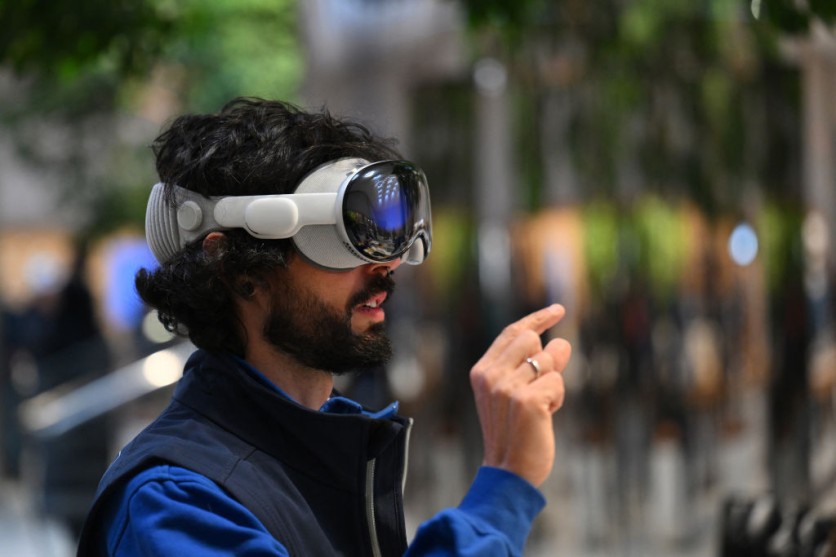
The Apple Vision Pro has been out for two weeks, and users are discovering it may help legally blind and severely visually impaired people see better.
"I can see better through this than with my normal, naked eye. Oh, wow!" Creator James Rath said on his TikTok that he had documented his experience with the Vision Pro as a legally blind person.
Rath is among the users who have been experimenting with the Vision Pro and find that it can help with their eyesight when using the device. However, blindness is a complex issue, and what will work for one won't work for another.
"The idea that the headset allows someone with partial vision to see better than their natural vision is true, but only under certain conditions and with diminishing returns," Kurtis Weir, a lecturer and researcher at Birmingham City University, told Tech Times in an interview. "To say that it's because the headset is closer to the eyes is an oversimplification as there are many other factors: light enclosed shining directly into the retina, restricted field of view, the curvature of the lenses, fixed focal compatibility, and so on. There's a sweet spot of when this can be beneficial to you."
Research Supports Vision Boost With Headsets
Weir has researched this topic with one of the earliest Oculus Rift CV1 headsets and found powerful results. "During my investigation, I had a woman burst into tears as she was able to read a virtual poster I placed on a wall. While she normally could not read without severe assistance," he said. His PhD research compared natural vision to virtual vision by placing optometry charts in real-world and virtual environments. It tested participants on letter detection, contrast letter detection, reading words, and speed reading.
"60% of participants performed better in VR amongst the four tests," Dr. Weir said. "In my exploration, I realized visual disabilities are so complex that it's very hard to get comparative results from just people with severe low vision as the complexities of someone having a cataract, one blinded eye, nystagmus, diabetic retinopathy, and all sorts started to compound." He continued, "However, there was clear evidence that, for some, there can be a significant visual gain without making any enhancements to the headsets at all."
While the screen may be only a few inches from your eyes, the focal distance is usually set a few feet away. This is why some people with short or long-sightedness may still require prescription lenses to use a headset, which Apple offered with the Vision Pro.
"The people that were angry [at the creator] are likely people that had enough vision that a headset, without enhancements, isn't going to help them," Dr. Weir said. "It's really only legally blind, or people with complex visual disabilities, that could benefit."
In an interview, Saya Nagori, ophthalmologist and founder of EyeFacts, said that common conditions like cataracts or diabetic retinopathy wouldn't benefit from using a VR headset-suggesting surgery or diligent blood sugar management would be more effective. But puts forward that people with glaucoma, age-related macular degeneration, Stargardt, and retinitis pigmentosa may benefit from using a VR headset. That said, this is a complex issue, and each condition may require different enhancements to the headset.
While the Vision Pro and other common VR headsets can help visually impaired people, the eSight is a VR device made for people with low vision. eSight users mostly have macular degeneration, diabetic retinopathy, and Stargardt's disease.
VR Is No Panacea
Experts say That no VR headset will address the underlying issue of vision impairment. As a result, anyone living with such conditions should seek professional medical help. Most headsets are strapped with a few accessibility features for blind people, including voice commands, haptic feedback, and live captions. While this is great, experts are calling for better accessibility features.
"Text scaling should be customizable either by standardized font size or by pixel, or slider, rather than simplistic categories," Weir said. "There should be the ability to hold and zoom onto an element in front of you, sort of like a button press magnifier. You should be able to change colors freely, change the default text color, change background color, and be able to dim or fade out the virtual background when accessing panel content."
Fortunately, it seems the Apple Vision Pro has taken a step in the right direction with some advanced accessibility features. As mentioned in the original TikTok, the Vision Pro allows users to change eye tracking to head tracking for those with nystagmus-the involuntary shaking of the eyes.
"It's great to finally see some partial recognition of the capabilities of these devices, even if it's in a TikTok format," Weir said. And hopefully, the Vision Pro has also set a new standard for accessibility features for blind VR users.
Ryan S. Gladwin is a freelance journalist who has been published in Fortune, VICE, Fast Company, The Daily Beast, The Verge, Mashable, and more. His portfolio is available at https://muckrack.com/ryan-s-gladwin
![Apple Watch Series 10 [GPS 42mm]](https://d.techtimes.com/en/full/453899/apple-watch-series-10-gps-42mm.jpg?w=184&h=103&f=9fb3c2ea2db928c663d1d2eadbcb3e52)



